|
| Brandenburger Tor. The Main simbol of Germany |
|
|
Berlin is the Capital of Germany, and before that was the capital of
Prussian Empire, one of several German people with separate Empires.Berlin is the biggest city in Germany, and is also
a State-City.The population of Berlin is 3,396,990 people. The Brandenburger Tor that you see in the picture, is
a former city gate and one of the main symbols of Berlin and Germany.It was commissioned by Friedrich Wihelm II, as a sign
of peace and built from 1788 to 1791.This is one of the Many beautiful places in Berlin to visit.The Main Streets of
Berlin are 17 June and Unter den Linden. The Subway Station is the same name. There you will find the Greatest Building´s
in Berlin, a Beautiful river , many stores, and History.
| Reichstag the Parlament Building |
|
|
The Reichstag building in Berlin was constructed to house
the Original parlament of Germany. It was opened in 1894. Today the parlament is called Bundestag. The Reichstag as a
parliament dates back in to the Holy Roman-German Empire.THE ENTRANCE OF VISITOR IN THE
BUILDING IT´S FREE AND THERE IS A BEAUTIFULL VIEW OF THE CITY OF BERLIN IN THE MODERN GLASS DOM AT THE TOP.
| The Siegessäule ( Victory Column ) |
|
|
The Victory Column (Siegessäule) is a famous sight of Berlin.After
1864 to commemorate the Prussian victory in the War Danish-Prussian War, and also The Prussians defeated Austria in the Austro-Prussian
War(1866), and also defeated France of Napoleon in the Franco-Prussian War(1870-1871).This monument was build to commemorate
several victorys of Prussian Empire(one of the States of Atual Germany).This Monument is situated in the 17 June Street in
Berlin, one of the most beautiful Streets in the World. He is coverade with trees in bouth sides and in the middle of the
Street is this Great Monument.THE
ENTRANCE TO THIS BUILDING TO VISITORS COST 2,20 EUROS PER PERSON.INSIDE HAVE SEVERAL MODELS OF BEAUTIFULS BUILDINGS AND MONUMENTS
OF GERMANY, AND YOU CAN SEE ALL OF BERLIN CITY IN THE TOP OF THE VICTORY COLUMN.
MUNICH !! Capital of Bavaria State
Munich Videos on youtube:
Munich Official Website:
Munich is Germany´s third largest city and one of Europe's most prosperous,The city has a population of about 1.3
million; but the greater Munich has a population of 2.6 million people. Munich is located on the Beautiful River Isar and
north of the Bavarian Alps.Munich was founded in 1158. Munich is a Medieval city, and was the capital of Bavarian Empire.
The city had 5 Gates for the entrance, and it was surrounded for walls and Archer towers.Today still remaining 3 Gates
in perfect conditions, the other 2 had orders to be destroyed because the city was growing and the streets becaming Avenues.
The Walls don´t exist no more but you can see some archer towers but between modern buildings. Munich has 2
castles 6 Palaces and Several Monuments and Beautiful Buildings. Its a city that you must see with your eyes.
| Nymphenburg Palace in Munich |
|
|
Odeonsplatz is a large square in central Munich which was named after the former concert hall Odeon.In
1791 the medieval city wall was demolished and plans for a square at the point of the Schwabing Gate (Schwabinger Tor)
could be realized with the erection of the Brienner Strasse in 1816. The Schwabing Gate itself was broken down in 1817.
The Odeonsplatz is also the southern initial point of the Ludwigstrasee. Here Leo von Klenze constructed the Feldherrnhalle
(Hall of Heroes) between the Munich Residence and the Theatine Church and the Hofgarten Tor (Hofgarten
Gate, 1816) at the end of the Brienner Strasse. North of this gate Klenze erected the Bazaar Building (1824-1826) of
the Hofgarten and adverse in widening of the Ludwigstrasse the Odeon (1826-1828; present home of the Bavarian Ministry
of the Interior) and the Leuchtenbger Palais (1816-1821; present home of the Bavarian Treasury Department). The Equestrian
Statue (by Max von Widnmann, 1862) was created in honour of the principal, King Ludwig I of Bavaria.
The Nymphenburg Palace in Munich was Home of several Kings
of Bavarian Empire, as the Most Famous Ludwig II(1845-1886). He constructed the Most Incredible Buildings,Monuments, Parks,
Castles and Palaces that Bavaria has. As like Neuschwanstein, Linderhof, Herrenchiemsee, Englischer Garten and more other
that you will know.THE ENTRANCE OF THE PALACE FOR VISITORS
COST 5,00 EUROS PER PERSON, AND YOU HAVE ACCESS TO THE MAIN ROOMS, AND THE KING´S ART GELERIE.PEOPLE UNDER 18 YEARS OLD
WITH SOME ONE OLDER DON´T PAY NOTHING IN THIS AND ALL PALACES AND CASTLES IN BAVARIA STATE.THE PALACE HAS ALSO A BIG PARK
AND GARDENS THAT IT´S FREE TO ENTER.
FRANKFURT AM MAIN !! The Richiest City of Germany
Frankfurt am Main is the city of the future.It has a population of 661,877 people.The
Germans decide after the second World War to reconstruct this city in Technological Architecture and modern Style, only very
few landmark buildings have been reconstructed historically.Frankfurt was also named Europe's richest city in 2001 as measured
by GDP per capita, and it´s the richiest city in Germany.
| Frankfurt Am Main at Night |
|
|
The three pillars of Frankfurt's economy are finance, transport,
and trade fairs. Frankfurt has been Germany's financial capital for centuries, and it is the home of a number of major banks
and brokerages. The Frankfurt Stock Exchange is by far Germany's largest, and is one of the world's
most important. Frankfurt is also the seat of the European Central Bank which sets monetary policy for the Eurozone economy,
and of the German Bundesbank. A number of major German commercial banks, including Deutsche Bank, Dresdner Bank, Commerzbank
are based in Frankfurt.
| Center of the City of Frankfurt Am Main |
|
|
This are some of the Buildings that were reconstructed as they were,
because the Historical significance:
DRESDEN !! The capital of Culture, Art and Saxony State
Dresden is the capital of the Saxony State, and the old Saxony Empire,
and it is situated in a valley on the beautiful River Elbe, The population is around 504,635 people. Dresden claims to be
one of the greenest cities in Europe, with 63% of the city being green areas and forests. The Dresdner Heide to the
north is a forest 50 km² in size. There are four nature reserves. The additional Special Conservation Areas cover 18 km².
The protected gardens, parkways, parks and old graveyards host 110 natural monuments in the city. The Dresden Elbe Valley is a world heritage site which is focused on the conservation of the cultural landscape
in Dresden. One important part of that landscape is the Elbe meadows which cross the city, 20 kilometers long.
| Dresden by the Elber River |
|
|
Dresden has a long history as the capital and royal residence for
the Kings of Saxony, who for centuries furnished the city with cultural and artistic splendor.Dresden has emerged
as a cultural, political, and economic centre in the eastern part of the Federal Republic of Germany.
The Elector and ruler of Saxony Frederick Augustus I (1670-1733) was
King August the Strong of Poland in personal union. He gathered many of the best musicians, architects and painters and
from all over Europe to Dresden. His reign marked the beginning of Dresden's emergence as a leading European city for technology
and art. Dresden suffered heavy destruction in the Seven Year´s War (1756-1763)
Dresden lies on both banks of the river Elbe, mostly in the Dresden
Elbe Valley Basin, with the further reaches of the eastern Ore Mountains to the south, the steep slope of the Lusatian
granitic crust to the north, and the Elbe Sandstone Mountains to the east at an altitude of about 113 meters. The highest
point of Dresden is about 384 meters in altitude.With a pleasant location and a mild climate on the Elbe, as well as Baroque-style
architecture, Dresden has been called "Elbflorenz" (Florence of the Elbe).The incorporation of neighbouring rural communities
over the past 60 years has made Dresden the fourth largest urban district in Germany after Berlin, Hamburg, and Cologne
NÜRNBERG !! The big medieval city
| Nürnberg Center |

|
Nuremberg (Nürnberg)is a incredible city, when you enter in the City Gates
in the Center you travel in time to a Medieval Age. You will find Archer towers, Gates, Castle, Church´s, building´s and Wall
almost 100% surrounding the city center,all from the time of Holy German-Roman Empire. Nuremberg has a beautiful River
that pass in the middle of the Center with a island in the middle that give´s you a great view. Nuremberg situated on
the Pegnitz river and the Rhine-Main-Danube Canal. It is located about 105 miles north of Munich. Population is 500,132 people.
| Castle Kaiserburg in Nürnberg |
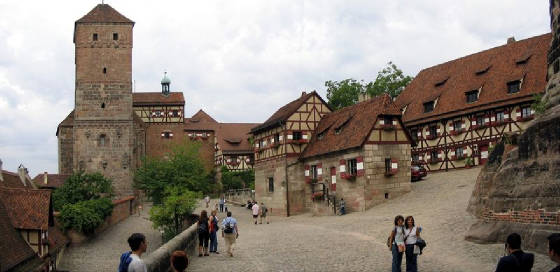
|
This is the Kaiserburg (Castle of the King), Between 1050 and 1571,
all Kaisers and kings of the Holy German-Roman Empire resided in the castle. In 1140, King Conrad III started building
a second castle on the site, to be the royal residence.THE ENTRANCE TO VISITOR IN THE CASTLE COST 6 EUROS PER PERSON.
PEOPLE UNDER 18 YEARS OLD WITH SOME ONE OLDER DON´T PAY TO ENTER IN THIS AND IN ANY CASTLES AND PALACES IN BAVARIA STATE:
| River in the Middle of Nürnberg |
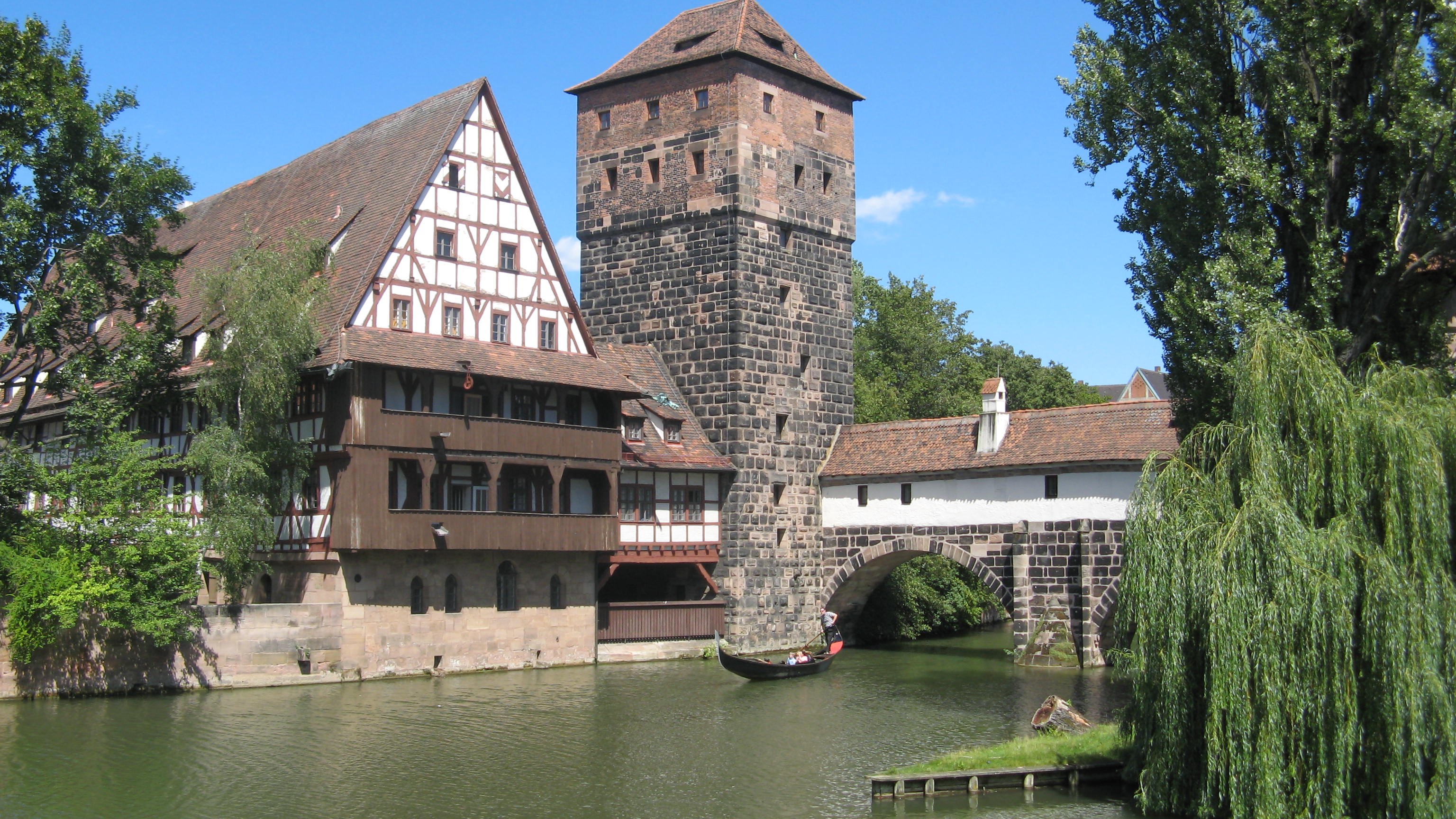
|
Nuremberg was an early center of humanism, science, printing,
and mechanical invention.The city contributed much to the science of astronomy. From 1050 to 1571, the city expanded and rose
dramatically in importance due to its location on key trade routes. It is often referred to as having been the 'unofficial
Capital of the Holy Roman Emperor, particularly because Reichstage (Imperial Diets) and courts met at Nuremberg Castle. The Diets of Nuremberg were an important part of the administrative
structure of the empire. In 1219 Nuremberg became an Imperial Free City under Emperor Frederick II.Nuremberg soon became,
with Augsburg, one of the two great trade centers on the route from Italy to Northern Europe.
Stuttgart
| Old Medieval Gate of Potsdam |
|
|
| Brandenburger Tor of Potsdam |
|
|
Heidelberg!! A Dream city !!
| Heidelberg |

|
Heidelberg it´s a wounderful city that lies on the river Nektar in the State of Baden-Württenberg. The old town,
in German Altstadt, located at the southern side of the Neckar, is long and narrow and is dominated by the ruins of
the Heidelberg Castle which perches 80 metres above the Neckar on the steep, wooded side of the Königstuhl ("King's chair")
hill. The Karls´gate (Karlstor) is a triumphal arch in honour of the Prince Elector Karl Theodor, located at Heidelberg's
very east. It was erected from 1775 until 1781 and designed by Nicolas de Pigage The house "Zum Ritter Sankt Georg" (Knight
St. George) is one of the few buildings, which survived the war of succession. The building opposite of the Church of the
Holy Spirit was build in the style of the late Renaissance period. The house is named after the sculpture at the top.
| Hedelberg |
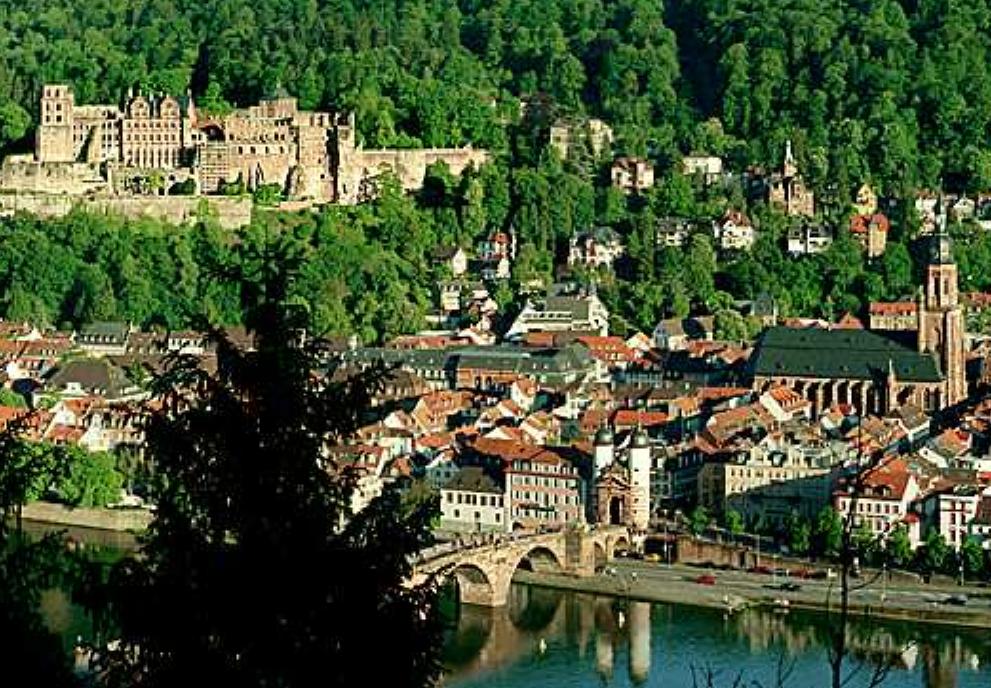
|
The "Marstall" was an arsenal of the Heidelberg Castle in which several different goods were stored. The 19th century building
we see today was created in a neo-classical style. Since 1971, the "Marstall" houses lecture halls of the university. The
old bridge is a stone bridge which was erected from 1786 to 1788. There is a medieval bridge gate on the side of the old town,
originally part of its town wall. Baroque tower helmets were added as part of the erection of the stone bridge in 1788.
Würzburg !! A incredible medieval city !!
| Würzburg |
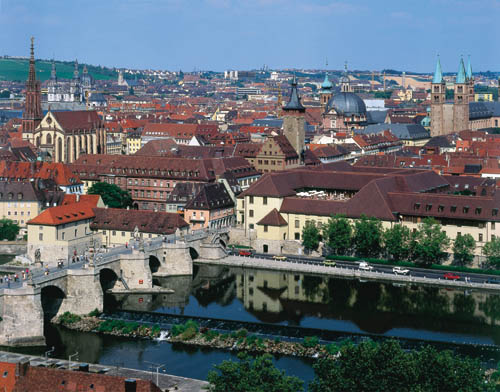
|
Würzburg its Amazing city in bavaria State, and lie one the Main river. The population is 131,320 people
and Würzburg is approximately 80 minutes train journey from Frankfurt, and almost an hour from Nürnberg. Distances to the
nearest cities by motorway: Frankfurt 115 km, Nuremberg 115 km, Stuttgart 150 km, Kassel 215 km.

By 1000 BC a Celtic fortification stood the site of the Fortress Marienberg. It was Christianized in 686 by the Irish missionaries
Killian, Colman and Totnan. The city is first mentioned as Vurteburch in 704. The first diocese was founded by
St.Bonifatius in 742. He appointed the first bishop of Würzburg, St.Burkhard. The bishops eventually created a duchy with
its center in the city, which extended in the 12th century to Eastern Franconia. The city was the seat of several Imperial
diets, including the one of 1180, in which Henry the Lion was banned from the Empire and his duchy was handed over to
Otto of Wittelsbach. The first church at the site of the Cathedral was built as early as 788, and consecrated that
same year by Charlemagne; the current building was constructed from 1040 to 1225 in Romanesque style. TheUniversity of
Würzburg was founded in 1402 and re-founded in 1582.
Freiburg !! A charming city !!
| Freiburg |
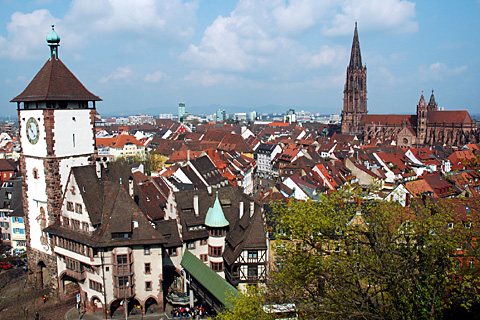
|
Freiburg is a city in the state of Baden-Württemberg, Germany (where it is officially known by its full name,
Freiburg im Breisgau), on the western edge of the southernBlack Florest (German: Schwarzwald). Popular opinion
has it that Freiburg is the warmest city in Germany. It straddles the Dreisam river, on the foothills of the Schlossberg.
The city is surrounded by the Blçack Forest mountains Rosskopf and Bromberg in the east, and in the south and
west by the Schönberg, Tuniberg and the Kaiserstuhl (King Throne).

Freiburg was founded in the 12th century by Duke Konrad of Zähringen as a free market town,
hence its name, which translates to "Free (or Independent) Castle". It was strategically located at a junction of trade routes
between the Mediterranean and the North Sea, and the Rhine and the Danube rivers. In the year 1368 Freiburg bought its liberty
from a local count, and turned itself over to the protection of the Habsburgs, who allowed it to retain a large measure of
freedom. Around 1200 the city began construction of its Minster (Münster in German) on the site of an older parish church.
The end of the Middke Ages and the dawn of the Renaussance was a time of both advances and tragedy for Freiburg.
Cologne !! Beauty and Traditon !!
| Cologne |
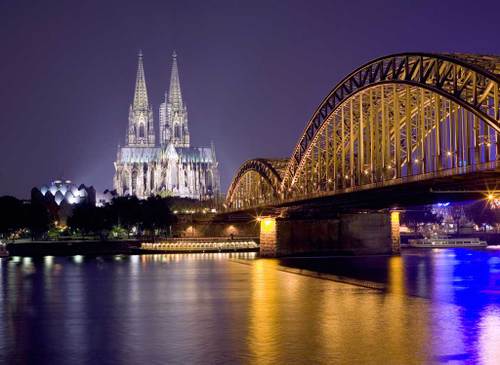
|
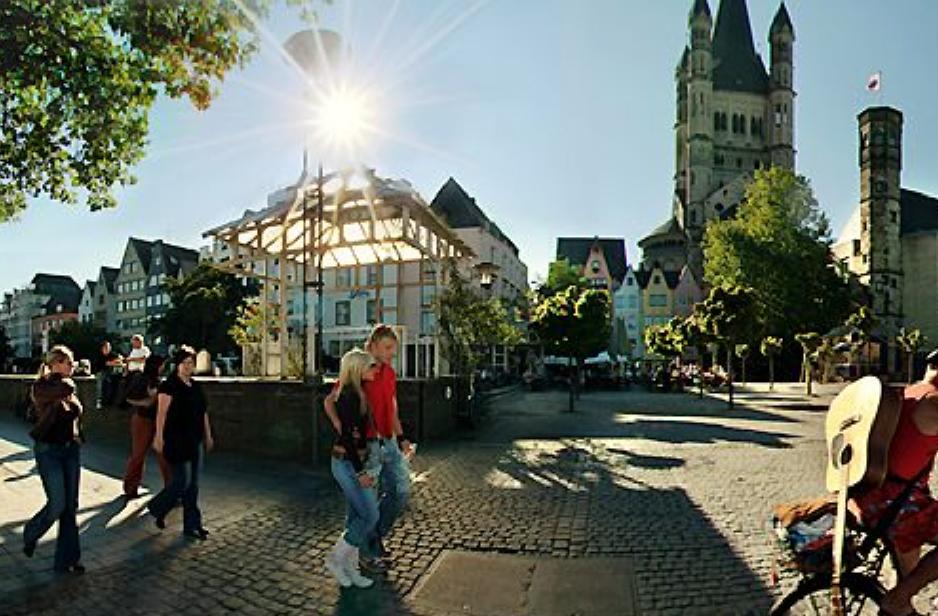
| Düsseldorf |
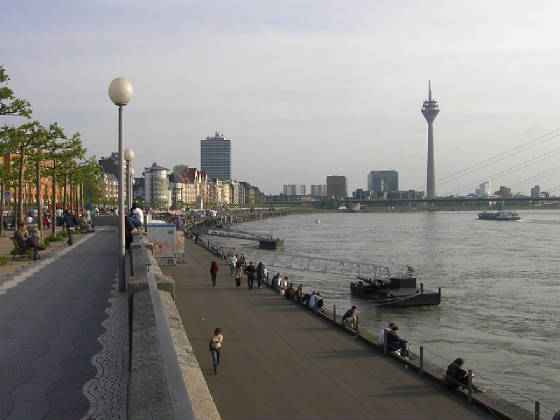
|
| Leipzig |
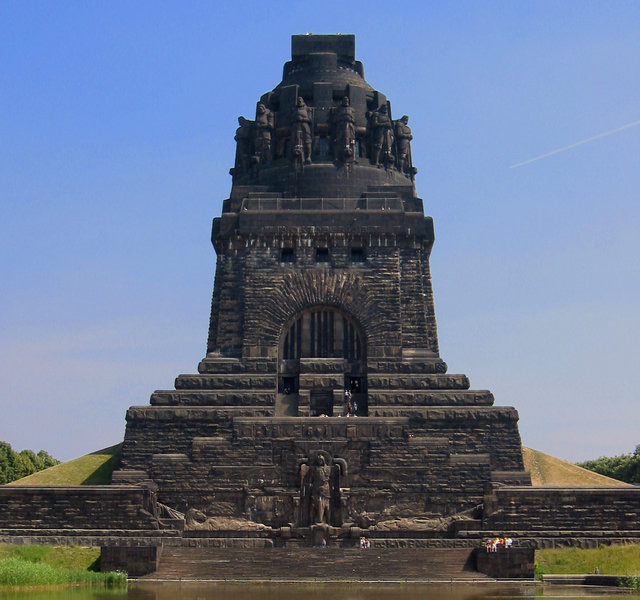
|
|

